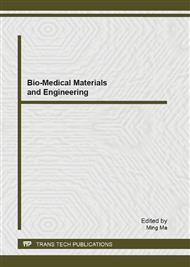p.3
p.13
p.18
p.23
p.27
p.31
p.38
p.44
The Effects of Superfine Powder and Sintering Technique upon Properties and Applications of some Piezoelectric Ceramics
Abstract:
This paper briefly reports on the improved properties and bettered applications of some piezoelectric ceramics (i. e. S-PZT, etc.) of ferro/piezoelectric community by means of bettering their technological process links, especial superfine grinding of powder of raw materials, and sintering technique of piezoelectric ceramics in them. These piezoelectric ceramic materials have obtained the better effect in their newly and widely applied aspects, such as, acoustoelectric transducing; electrical to mechanical to electrical transducing; acoustooptic effect; electrooptic technique, and, piezoelectric ceramics for high voltage generators, ignition and detonation purposes, and some original applications (e.g., combining the electrorheological fluids) etc.. As far as appropriate measure of the improving sintering and other technique processes in present work is concerned, they also have reference value to electronic ceramics of having similar manufacturing technological process, such as capacitor ceramics, resistance ceramics, magnetic ceramics, and oxide ceramic superconducting materials, etc..
Info:
Periodical:
Pages:
3-12
Citation:
Online since:
August 2013
Authors:
Keywords:
Price:
Сopyright:
© 2013 Trans Tech Publications Ltd. All Rights Reserved
Share:
Citation:


